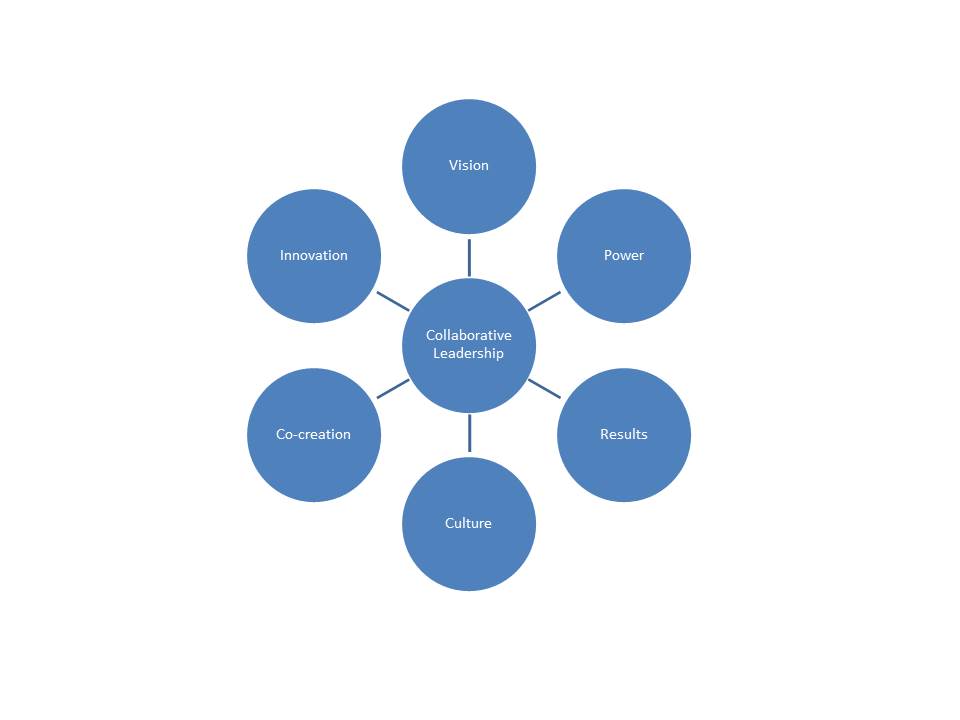 The Six Pillars Model (6PM)
The Six Pillars Model (6PM)
The Six Pillars Model (6PM) has been developed by myself and tested several times over the last few years as a container to help leaders and teams engage large system initiatives and transformations. This simple and innovative model poses that any human system might be approached through six pillars (see above). Each pillar can be considered as an active lever. Beyond the diversity of the pillars, the 6PM offers three major systemic innovations allowing us to embrace complexity:
- The first one is the antagonistic relationship between levers: vision vs. culture, power vs. co-creation, innovation vs. result. The vision requires emergent behavior to be shared. Innovation is the most important way to regenerate future results. Co-creation means ensuring that skilled people have agency to refresh and influence system behaviors.
- The second one is that there are three levers helping the system to open up to other systems or to eco-system, which means learning and adapting to new market conditions; these levers are vision, innovation and co-creation. Also, there are three levers that deal with closing up positions: power, results and culture. Power means “power over” other people; this is strongly connected to supervising, controlling and prioritizing; people getting power want to keep power. Results mean reproducing similar economic outputs at worst, improving at best. Culture means sharing a similar container – people capabilities, believes, behaviors, relationship, rituals, etc. Most often, the shortest and easiest way leaders see to legitimate power is by pushing the system to reproduce similar results, which implies aligning the system culture to power desires. As a conclusion, the system requires both: learning and adapting (visioning, innovating and co-creating), and reproducing (controlling, repeating and memorizing).
- The third innovation is related to the overall balance across the six pillars. Is it there any preferred system position? Intuitively, we believe that leading implies pushing the system towards a stable or static position. However, the 6PM sets that leading implies building a continuous dynamic balance among the six pillars. This is not possible without collaborative leadership.
Collaborative Leadership
Levers in antagonist relationship? Opening up levers? Closing up levers? Building a dynamic balance by leveraging on the six levers? Would that reflect a too complicated system? YES, especially to be managed through traditional leadership approach. NOT, by learning collaborative leadership approaches and tools.
Through the 6PM, we become aware about tensions, contradictions and paradoxes happening in any human system; some are visible and some are hidden. They all connect people to resistance, opposite views, lack of understanding, stress, blaming and conflict. Collaborative leadership implies raising awareness about the self –language, body, and emotion – in order to contribute to the team, and to have a team collaborative conversation in order to promote this dynamic balance.
As a conclusion, most of the complexity we are encountering in business those days is due to the fact that, 1) we prefer using quite simplistic models; 2) there is a preference for simplistic leadership approaches as they preserve power as a main argument to embrace complexity, and 3) most leaders ignore how to combine the self, teams and the large system. Collaborative leadership shows us that complexity might be an excellent excuse to do nothing.
Collaborative leadership, the main focus of our workshop taking place in Paris November 8 and 9, 2016. For more information or to register visit: https://www.weezevent.com/collaborative-leadership

